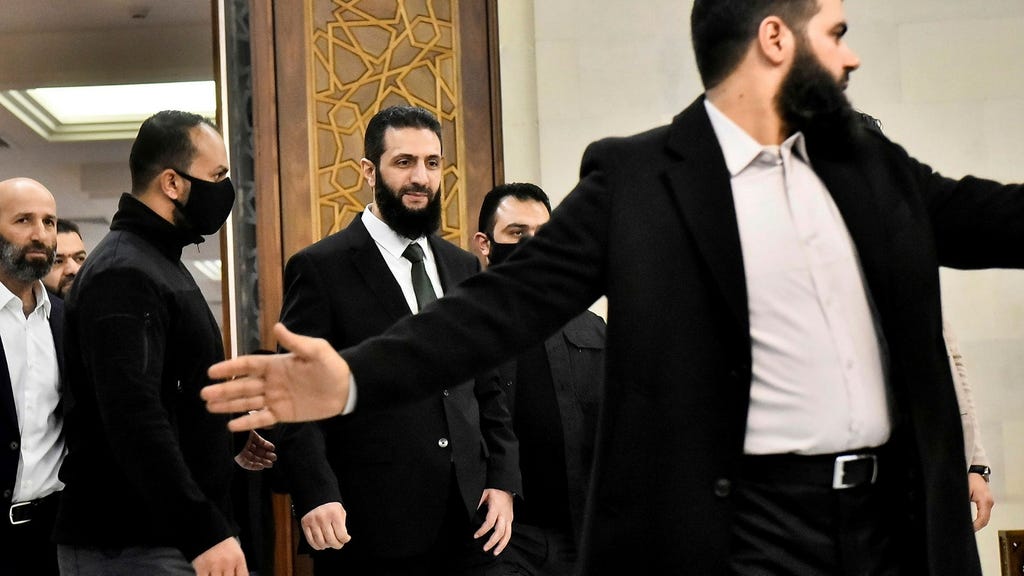Paragraph 1: The Unexpected Rise of HTS and al-Shara’s Charm Offensive
The fall of the Assad regime in war-torn Syria ushered in an unexpected new power: Hayat Tahrir al-Sham (HTS), a rebel group led by Ahmed al-Shara, also known as Abu Mohammed al-Julani. al-Shara immediately embarked on a charm offensive, aiming to project an image of stability and moderation both within Syria and to the international community. This strategy, according to Aron Lund, a Syria expert at the Swedish Defence Research Agency (FOI), has been relatively successful in the short term. HTS has maintained a surprising level of order and discipline within its ranks, a stark contrast to the chaos that often accompanies such transitions. This initial success has spurred several world leaders to explore the possibility of establishing relations with the new regime, a development deemed unthinkable just a year prior.
Paragraph 2: The Spectre of Past Atrocities and the Fragile Facade of Reform
Despite al-Shara’s efforts to rebrand HTS and distance the group from its past links to al-Qaeda, the emergence of videos depicting HTS members, including government officials, participating in public executions of women poses a significant challenge to his carefully constructed image. These acts threaten to undermine al-Shara’s pursuit of international legitimacy and crucial support in the form of aid and sanctions relief. While such atrocities are not entirely unexpected given HTS’s history, their public exposure complicates the international community’s response. The dilemma, as Lund points out, is that there are few viable alternatives to engaging with HTS, leaving many countries in a difficult position. Supporting a group with such a troubling human rights record is unpalatable, but the prospect of another power struggle destabilizing the region further is equally undesirable.
Paragraph 3: Balancing International Expectations with Internal Pressures
The international community’s cautious engagement with HTS stems from a pragmatic assessment of the situation in Syria. Just a year ago, the prospect of HTS seizing power was considered a nightmare scenario, conjuring fears of widespread violence and persecution of minority groups. Compared to those fears, the current concerns about al-Shara’s refusal to shake hands with a female foreign minister seem less catastrophic. This shift in perspective highlights the extent to which al-Shara has managed to reshape perceptions of HTS. Lund suggests that al-Shara is willing to make significant concessions to gain international acceptance, even if it means gradually adopting practices that clash with the group’s hardline ideology. However, this balancing act carries considerable risk. While al-Shara courts international approval, he must also contend with the expectations of his own hardline base, which may not tolerate such compromises.
Paragraph 4: The Risks of Normalization and the Perilous Path Ahead
While some view engagement with HTS as a necessary evil, others warn of the inherent dangers of normalizing relations with a regime implicated in serious human rights abuses. Danielle Barsoum Malik, a policy advisor at the Olof Palme International Center, emphasizes the gravity of appointing a justice minister with a clear record of violating both Syrian and international law. This appointment underscores the challenges of reconciling HTS’s past actions with its purported commitment to reform. al-Shara’s government faces a precarious balancing act, needing Western support in the form of economic aid, sanctions relief, and the removal of its terrorist designation, while simultaneously needing to maintain the support of its jihadist base. Failure to appease either side could lead to further instability and violence.
Paragraph 5: The Looming Threats and the Fragility of Peace
The precarious nature of the situation in Syria is further underscored by the ongoing clashes between various rebel groups, creating a volatile security environment. The lack of clarity regarding the allegiances and objectives of these groups adds to the complexity of the situation. Furthermore, the presence of Israeli forces on the Golan Heights presents a constant external threat, which could escalate tensions and pressure al-Shara to take action. Internally, al-Shara must also grapple with the potential for dissent within his own ranks if he is perceived as being too conciliatory towards the West. The incoming US administration’s stance on Syria will also be a crucial factor, as a designation of Syria as a terrorist state could further embolden internal opposition and undermine al-Shara’s authority.
Paragraph 6: A Delicate Balancing Act and the Uncertain Future of Syria
Al-Shara’s efforts to appease both international actors and his internal base are increasingly straining the limits of his authority. He appears willing to go to great lengths to gain international acceptance, but there is a point beyond which his concessions may jeopardize his credibility within HTS. Minimizing scandals and maintaining a semblance of stability are crucial for al-Shara’s survival. However, the widespread availability of weapons combined with a lack of economic resources creates a volatile environment ripe for conflict. The precarious nature of the current peace underscores the immense challenges facing Syria as it navigates this uncertain transition. The delicate balance al-Shara has struck is constantly threatened by internal and external pressures, leaving the future of Syria hanging precariously in the balance.














